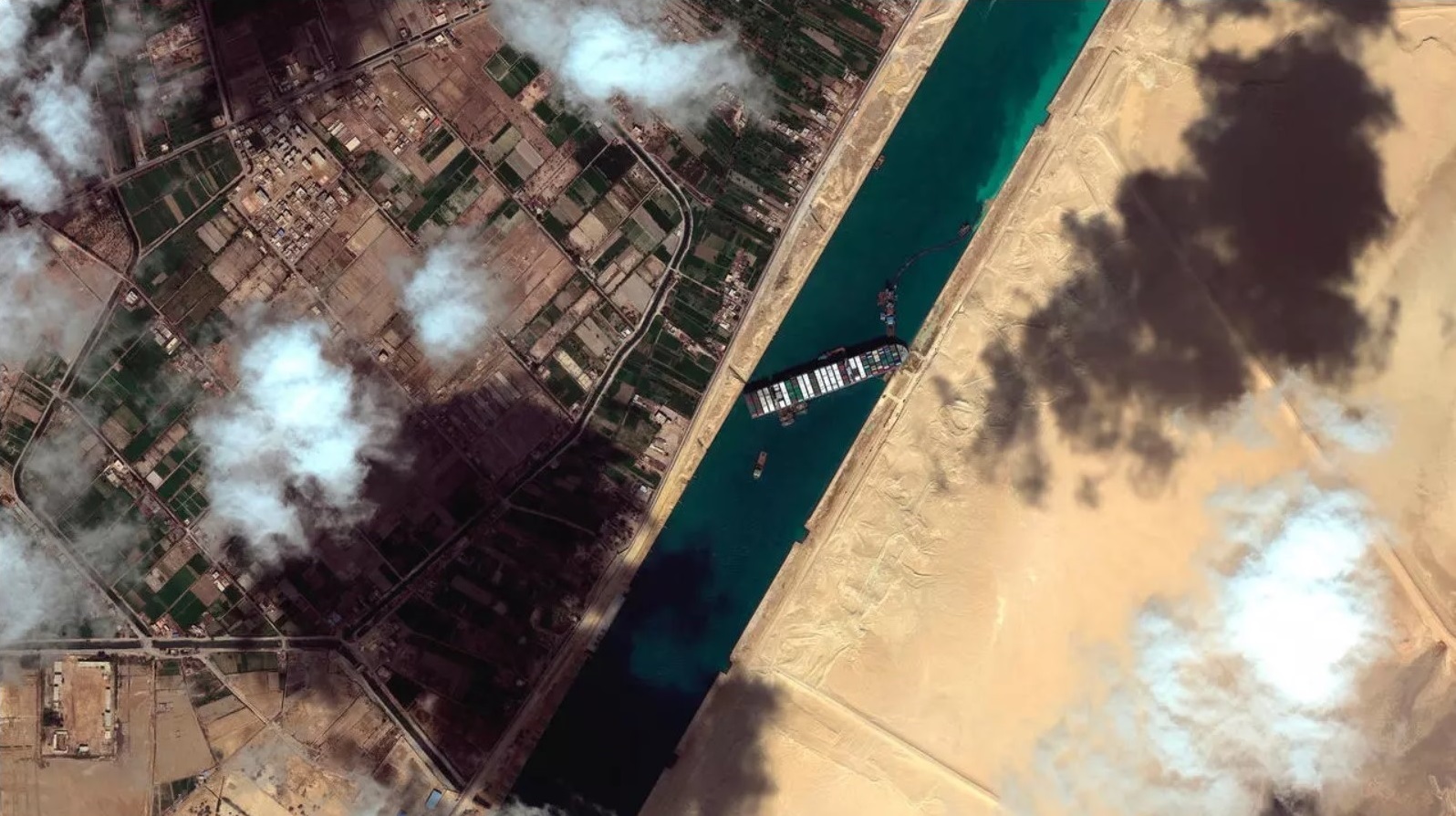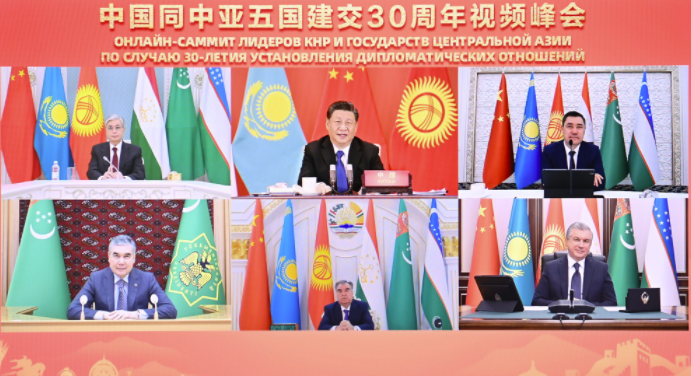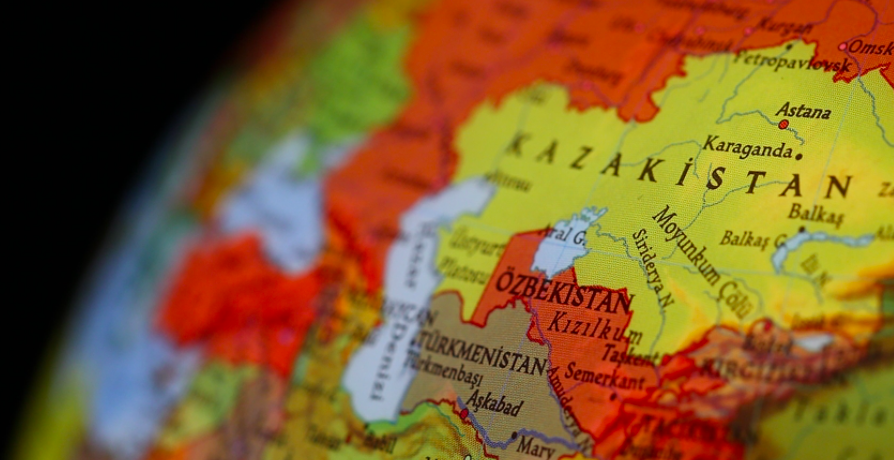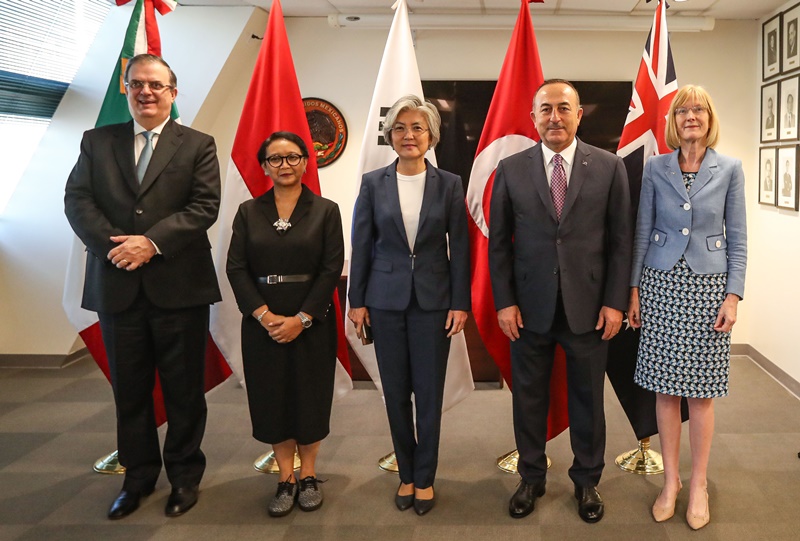
On March 27, a long-negotiated trade, investment, and defense agreement was signed between China and Iran. Although no comprehensive information has yet been shared about the details of the agreement that will last 25 years, China will be able to buy oil from Iran by circumventing the sanctions imposed by the US in line with this agreement and will invest in Iran in return.[1] According to the statement from China regarding the agreement, relations with Iran will develop on a permanent and strategic basis. The agreement is expected to cover Chinese investments in sectors such as energy and infrastructure. According to the news reflected in the Iranian press, the agreement was evaluated as a product of “successful diplomacy” and the advisor of Iranian President Hassan Rouhani stated that “The power of a country lies not in its ability to stand alone, but in its ability to participate in coalitions.”[2]
On 23 March, a container ship became stuck between the two sides of the Suez Canal, stopping ship traffic for days and causing a global disruption. The incident involving the Ever Given container ship, operated by the Taiwanese Evergreen Shipping company, once again demonstrated the importance of the Suez Canal as a global supply route. Each day the ship blocked the passageway in the canal caused 9 billion dollars in damage to the global economy. Considering that 15 percent of global trade passes through the Suez Canal, this is not a surprising result.[3] According to 2020 data, 80 percent of the trade between Asia and Europe flows through the Suez Canal.[4]
This should be seen as a warning for how vulnerable globalized markets have become. This situation has highlighted the importance of protecting global trade and its routes and keeping supply lines open. As the sea traffic has intensified on both ends of the Suez Canal, the demands and orders of the China Railway Group’s cargo department has increased as well. In addition to that, China has made new proposals to expand the capacity of the rail link, reduce the delivery time, and the cost, but also to ensure that more goods flow from China to Europe over land.[5] Iran, on the other hand, has been supporting the north-south trade corridor which is connecting India to Russia through Iran as an alternative to the Suez Canal for years. According to Iranian authorities, the proposed shipping line is seen as a good option in terms of time and cost savings of 30 percent compared to the Suez Canal.[6] After the agreement between Iran and China, two states that advocate alternative projects to the Suez Canal, discussions on opening a new route to replace Suez have intensified. While these two actors are getting closer via the agreement, they are also positioning themselves in strategic locations close to the Red Sea entrance of the canal. This raises the possibility that both countries could weaken Egypt’s control over access to Suez from the Indian Ocean.[7]
The possibility of opening an alternative route under the leadership of China and Iran leads to some opinions that these two countries may attain some privileges in this context. Since 2014, the violent and prolonged civil war in Yemen in the northwest of the country between the Houthi movement and the government has the possibility of giving Iran control of access to the Red Sea at many points.[8] In addition, Iran believes that the rapid increase of the influence of the International North-South Transport Corridor (INSTC) will provide Iran with an important leverage in terms of regional competition. Also, INSTC will strengthen Iran’s position by increasing the effectiveness of the railway link between western China and Iran (which opened two years ago) and thus enabling Iran to play a key role in the Belt and Road Initiative.[9]
The extraordinary coinciding of the signing of the Iran-China strategic partnership agreement with the Ever Given incident in the Suez Canal will favor the Belt and Road Initiative and give a renewed relevance to Eurasian integration. The road and rail corridors in Eurasia are important for the Belt and Road Initiative. The most significant corridor is the Xinjiang-Kazakhstan road, followed in importance by the roads connecting Russia and beyond. Another important route is the one starting from Central Asia, passing through Iran and Turkey, and reaching the Balkans and eastern Europe. It may take some time for them to compete with the sea routes in terms of volume of cargo being transported, but a significant reduction in transportation time they offer will make roads and railways functional.[10] In response to all these developments, the West must first try to prevent Iran from gaining a position in Yemen, and second, to prevent the further expansion of China in the Horn of Africa in order to curtail the influence of these two powers in the region. Otherwise, the damage for the West could be much more severe than the one caused by the Ever Given container ship.[11]
*Photograph: The Ever Given ship that blocked the Suez Canal. Source: France 24
[1] Jeremy Bowen, “Çin-İran anlaşmasıyla kurulan 'stratejik ortaklık' Orta Doğu'yu nasıl etkileyebilir?”, BBC News Türkçe, 31 Mart 2021, https://www.bbc.com/turkce/haberler-dunya-56587801
[2] “Çin ve İran 25 Yıllık İşbirliği Anlaşması İmzaladı”, Amerika’nın Sesi, 27 Mart 2021, https://www.amerikaninsesi.com/a/cin-ve-iran-25-yillik-isbirligi-anlasmasi-imzalad%C4%B1-/5830684.html
[3] Robert Tyler, “The Next Suez Crisis: China and Iran”, The Euro-Gulf Information Centre, March 31, 2021, https://www.egic.info/next-suez-crisis-china-iran
[4] Frank Chen, “Suez Canal logjam boosts China-Europe rail link”, Asia Times, March 30, 2021, https://asiatimes.com/2021/03/suez-canal-logjam-boosts-china-europe-rail-link/
[5] Chen, “Suez Canal logjam boosts China-Europe rail link”.
[6] Muhammad Khubaisah, “Iran proposes alternative shipping line to Suez Canal”, Anadolu Agency, March 28, 2021, https://www.aa.com.tr/en/middle-east/iran-proposes-alternative-shipping-line-to-suez-canal/2190717
[7] Tyler, “The Next Suez Crisis: China and Iran”.
[8] Ibid.
[9] James M. Dorsey, “Flying Under the Radar: Iranian Alternatives to Suez and Belt and Road”, InsideArabia, July 21, 2020, https://insidearabia.com/flying-under-the-radar-iran-india-russia-alternatives-to-suez-and-belt-and-road/
[10] Pepe Escobar, “China-Iran pasct paves way for alternative to Suez”, Asia Times, April 2, 2021, https://asiatimes.com/2021/04/china-iran-pact-paves-way-for-alternative-to-suez/
[11] Tyler, “The Next Suez Crisis: China and Iran”.
© 2009-2025 Center for Eurasian Studies (AVİM) All Rights Reserved
No comments yet.
-
 CHINA’S INTERACTION WITH CENTRAL ASIAN COUNTRIES IS INCREASING
CHINA’S INTERACTION WITH CENTRAL ASIAN COUNTRIES IS INCREASING
Şevval Beste GÖKÇELİK 08.03.2022 -
 COMPETITION FOR INFLUENCE IN CENTRAL ASIA
COMPETITION FOR INFLUENCE IN CENTRAL ASIA
Şevval Beste GÖKÇELİK 08.02.2022 -
 THE REFLECTIONS OF THE 2020 KARABAKH WAR ON ARMENIA AND THE ARMENIAN DIASPORA
THE REFLECTIONS OF THE 2020 KARABAKH WAR ON ARMENIA AND THE ARMENIAN DIASPORA
Şevval Beste GÖKÇELİK 11.12.2020 -
 GEORGIA-TURKEY RELATIONS IN THE CONTEXT OF THE MESKHETIAN TURKS ISSUE
GEORGIA-TURKEY RELATIONS IN THE CONTEXT OF THE MESKHETIAN TURKS ISSUE
Şevval Beste GÖKÇELİK 18.12.2020 -
 THE ROLE OF TURKEY IN G20 AND MIKTA
THE ROLE OF TURKEY IN G20 AND MIKTA
Şevval Beste GÖKÇELİK 12.03.2021
-
 CONCERNS OVER THE PATRIARCH ELECTION
CONCERNS OVER THE PATRIARCH ELECTION
AVİM 07.07.2017 -
 THE SMEARING OF KOPRULU AND ADIVAR BY THE CURRENT ADMINISTRATION OF THE OTTOMAN AND TURKISH STUDIES ASSOCIATION
THE SMEARING OF KOPRULU AND ADIVAR BY THE CURRENT ADMINISTRATION OF THE OTTOMAN AND TURKISH STUDIES ASSOCIATION
AVİM 11.01.2021 -
 THE INAUGURATION SPEECH OF THE NEWLY ELECTED ARMENIAN PRESIDENT ARMEN SARKISSIAN: MORE OF THE SAME IDEOLOGICAL OUTLOOK
THE INAUGURATION SPEECH OF THE NEWLY ELECTED ARMENIAN PRESIDENT ARMEN SARKISSIAN: MORE OF THE SAME IDEOLOGICAL OUTLOOK
Turgut Kerem TUNCEL 17.04.2018 -
FORMER ARMENIAN FOREIGN MINISTER V. OSKANIAN IS INCRIMINATED
Alev KILIÇ 03.10.2012 -
 THE US’ BLACK SEA STRATEGY AND TÜRKİYE FACTOR
THE US’ BLACK SEA STRATEGY AND TÜRKİYE FACTOR
Turgut Kerem TUNCEL 04.12.2023
-
25.01.2016
THE ARMENIAN QUESTION - BASIC KNOWLEDGE AND DOCUMENTATION -
12.06.2024
THE TRUTH WILL OUT -
27.03.2023
RADİKAL ERMENİ UNSURLARCA GERÇEKLEŞTİRİLEN MEZALİMLER VE VANDALİZM -
17.03.2023
PATRIOTISM PERVERTED -
23.02.2023
MEN ARE LIKE THAT -
03.02.2023
BAKÜ-TİFLİS-CEYHAN BORU HATTININ YAŞANAN TARİHİ -
16.12.2022
INTERNATIONAL SCHOLARS ON THE EVENTS OF 1915 -
07.12.2022
FAKE PHOTOS AND THE ARMENIAN PROPAGANDA -
07.12.2022
ERMENİ PROPAGANDASI VE SAHTE RESİMLER -
01.01.2022
A Letter From Japan - Strategically Mum: The Silence of the Armenians -
01.01.2022
Japonya'dan Bir Mektup - Stratejik Suskunluk: Ermenilerin Sessizliği -
03.06.2020
Anastas Mikoyan: Confessions of an Armenian Bolshevik -
08.04.2020
Sovyet Sonrası Ukrayna’da Devlet, Toplum ve Siyaset - Değişen Dinamikler, Dönüşen Kimlikler -
12.06.2018
Ermeni Sorunuyla İlgili İngiliz Belgeleri (1912-1923) - British Documents on Armenian Question (1912-1923) -
02.12.2016
Turkish-Russian Academics: A Historical Study on the Caucasus -
01.07.2016
Gürcistan'daki Müslüman Topluluklar: Azınlık Hakları, Kimlik, Siyaset -
10.03.2016
Armenian Diaspora: Diaspora, State and the Imagination of the Republic of Armenia -
24.01.2016
ERMENİ SORUNU - TEMEL BİLGİ VE BELGELER (2. BASKI)
-
AVİM Conference Hall 24.01.2023
CONFERENCE TITLED “HUNGARY’S PERSPECTIVES ON THE TURKIC WORLD"









